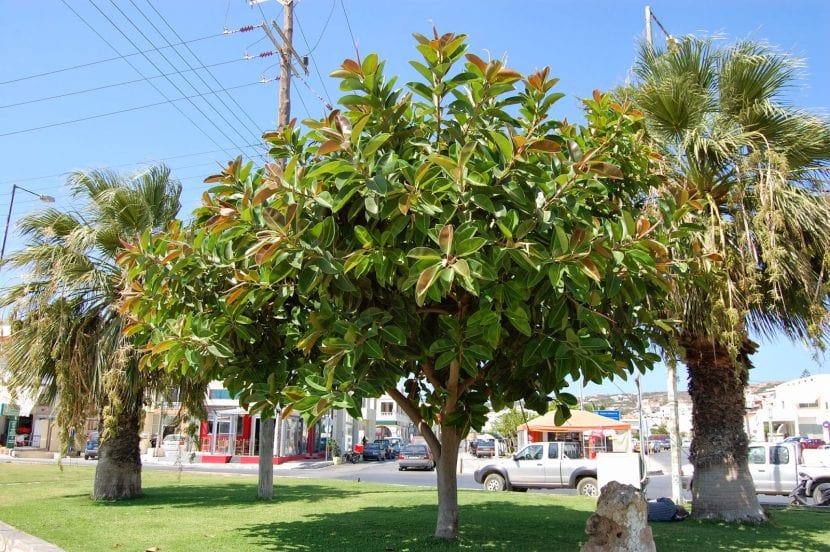
Image - Pecesornamentalesmarinodulce.blogspot.com
Ficus are, in general, climbers that eventually end up being trees with a highly developed root system, as is the case of what we know as robust ficus, gomero or rubber tree.
Despite how big it can get, it is one of the plants that is most used to decorate interiors, since it does not need much care to look good. But, What do you have to know to be able to enjoy this plant?
Origin and characteristics of Ficus robusta
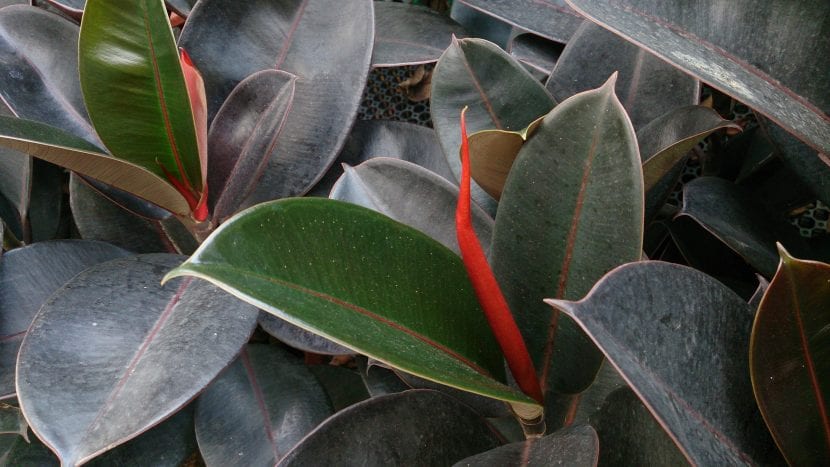
Our protagonist is a tree native to northeast India and western Indonesia that it can reach a height of 30 to 40 meters. Its scientific name is Ficus elastica 'Robusta', and usually begins its life as an epiphytic plant. It has large and broad leaves, about 35cm by 15cm, leathery, whole, dark green in color, almost maroon.
In order to produce seeds, it needs the help of the fig wasp, which will enter the flowers, located inside the immature fig, and pollinate them. In this way, the fig will be able to finish ripening. When it finally does, it will be small in size and greenish in color.
It is a toxic plant: inside it contains a latex that causes irritation to the skin and eyes. If ingested, it can be fatal.
How do you take care of yourself?
If you want to get a copy, we recommend providing the following care:
Climate
In order to successfully grow a plant, it is important to know what climate it thrives in, otherwise we could end up losing money. In the case of Ficus robusta, grows without problems in warm areas, without frosts or very weak (down to -5ºC). If the winter is colder in our area, we will have to protect it at home.
Location
- Garden: in full sun or in semi-shade, at a distance of about ten meters from any construction (swimming pool, paved ground, pipes, house, etc.).
- Housing: it must be in a room where a lot of light comes in from outside.
Earth
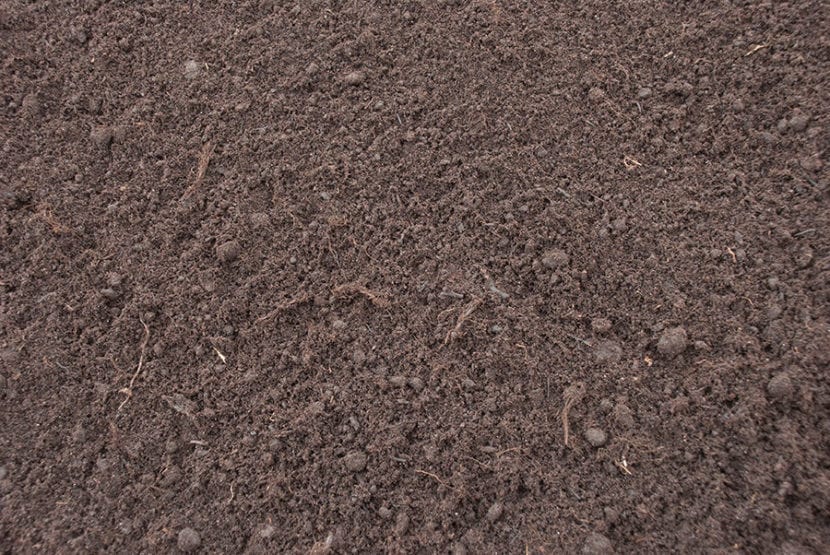
- Garden: it is indifferent as long as it is fertile, it must also have good drainage.
- Flower pot: universal culture substrate mixed with perlite in equal parts.
Irrigation
Irrigation it has to be frequent in summer and scarcer the rest of the year. Thus, we will water 3-4 times during the warmest months of the year and every 5-6 days the rest.
Subscriber
From early spring to late summer or early fall We will pay it with a liquid fertilizer, such as guano, following the instructions specified on the product packaging.
Pruning
Late winter. We have to remove dry, diseased or weak branches and trim those that have grown excessively. It is also important to apply healing paste or ash on the cuts so that it heals better. Gloves are also recommended.
Plagues and diseases
It's very tough; Nevertheless, can be attacked by nematodes and fungi, which damage the roots. To avoid it and / or prevent it, it is necessary not to overwater and treat it from time to time - once a month in spring and autumn - with copper or sulfur, sprinkling these on the surface of the substrate or soil.
Problems
Outdoors you have no problems if the weather is good, but indoors you can have the following:
- Fall of leaves: it is usually due to an excess of irrigation.
- Yellow sheets: if the lower leaves start to be yellow until they end up falling, it is due to excess watering; On the other hand, if the newer leaves are starting to get ugly, it is due to lack of watering.
- Leaves lose their color and the plant has an abnormal development: if the leaves turn a very light color, and / or if the branches grow to one side, it is probably due to lack of light.
- Brown spots on the leaves: could be light burns.
Planting or transplanting time
Whether we want to plant Ficus robusta in the garden or if we have to transplant it to a bigger pot, we must wait for spring.
Multiplication
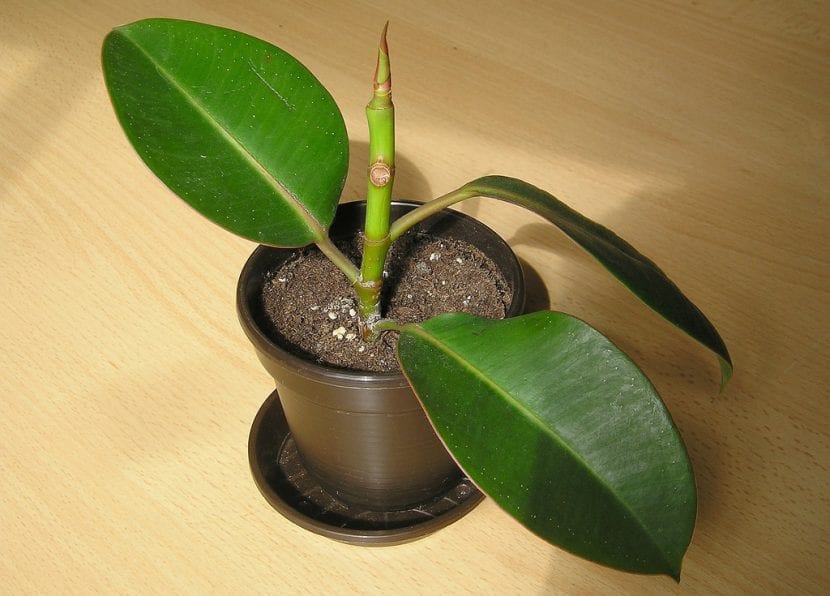
The gomero is a plant that multiplies very well by cuttings in spring. The way to proceed is as follows:
- The first thing we will do is cut a branch of about 30 or 40cm in length.
- Then, we will impregnate the base with homemade rooting agents or with powdered rooting hormones.
- Then, we plant it in a pot with a universal growing medium mixed with 30% perlite, washed river sand or similar.
- Then we water.
- Finally, we place the pot in a bright place but without direct sun.
So will emit roots in about 15-20 days.
Another way to get a new specimen is by placing the cuttings in a jar with water. We change the liquid and clean the container daily, and we will surely see that it takes out new roots after three or four weeks.
Rusticity
Withstands cold and frost up to -5ºC.
What uses does it have?
Ornamental
It is a plant that is grown in gardens and as a houseplant. In any place it looks very good, especially in the first ones, since with the passage of time it gives an excellent shade.
Other uses
The latex was used to make rubber.
Where is Ficus robusta bought?
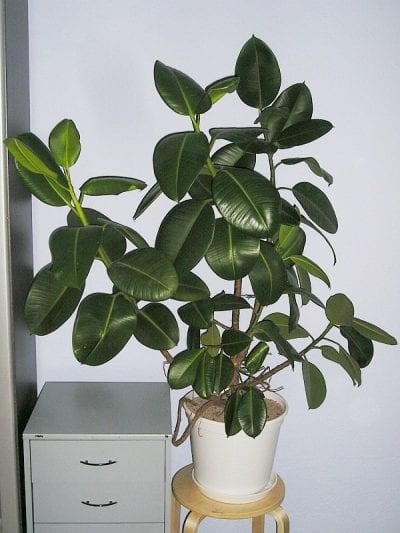
We can buy it at any garden or nursery store, either physical or online. The price ranges between 3 and 30 euros, depending on how many branches it has (from one to three) and on the height (from 5 to 60-70cm).
And you, do you have a Robusta Ficus?